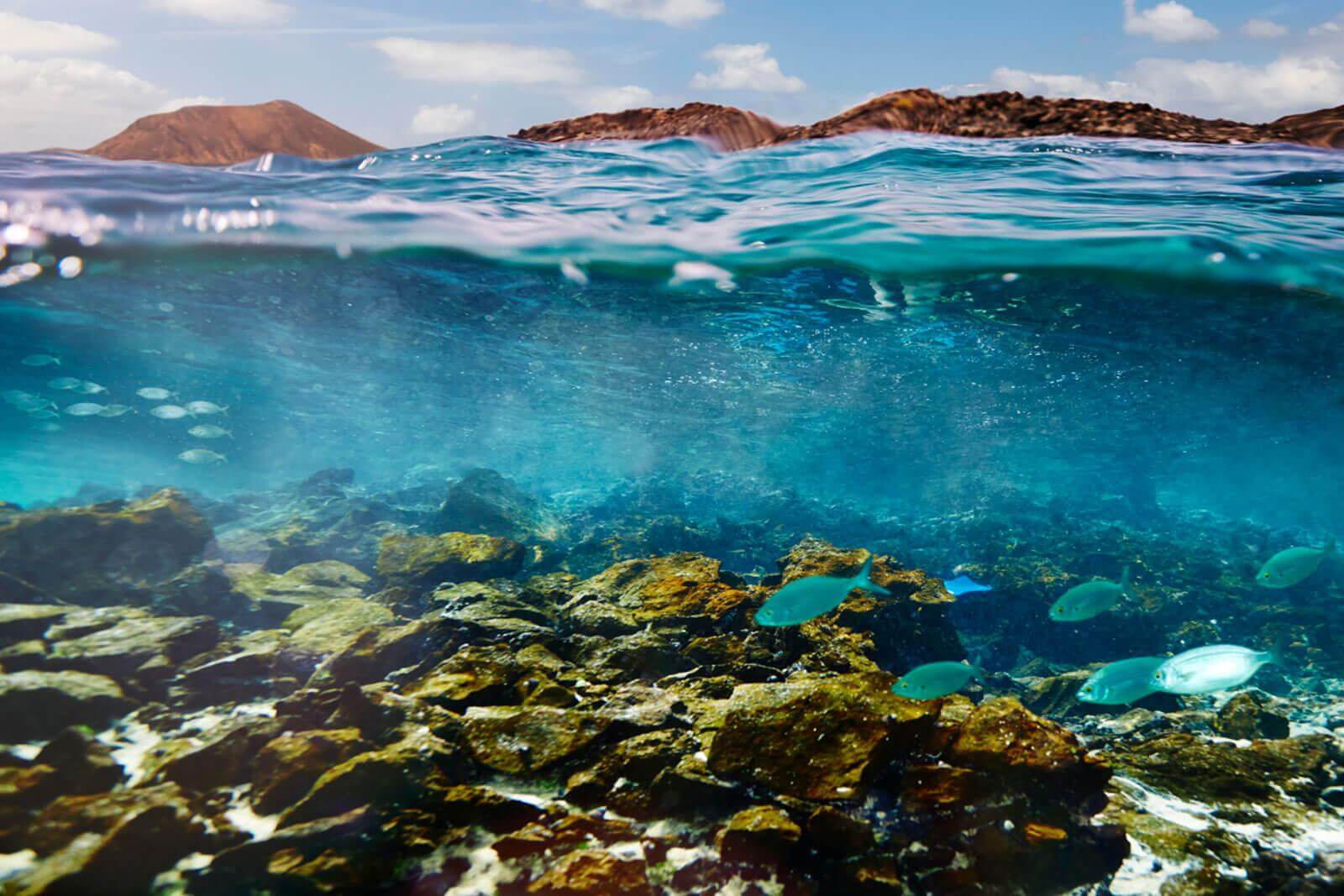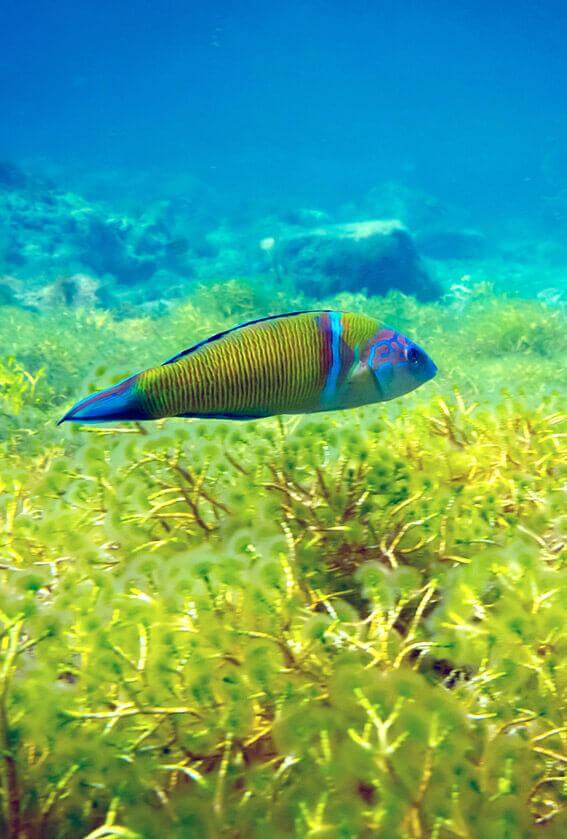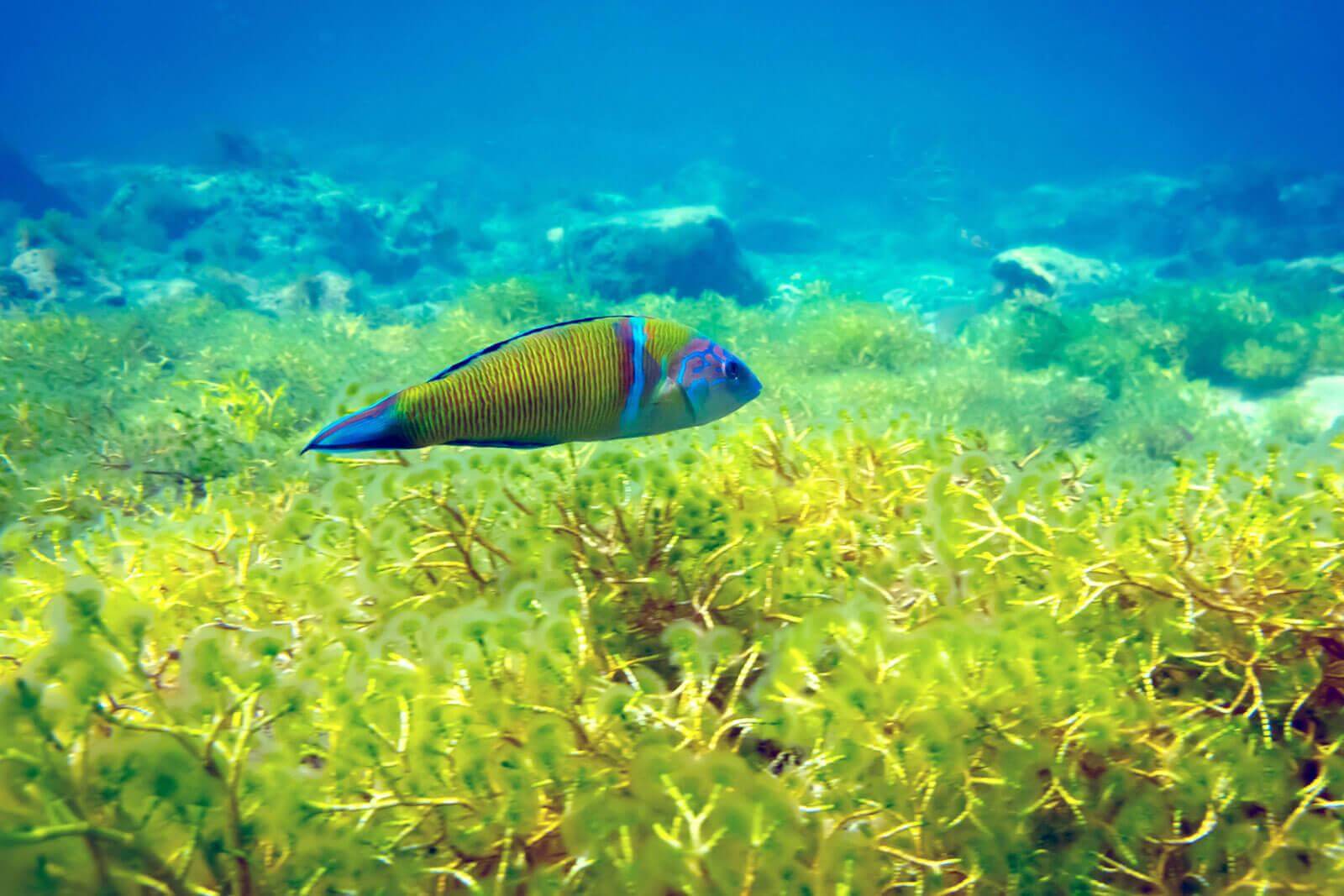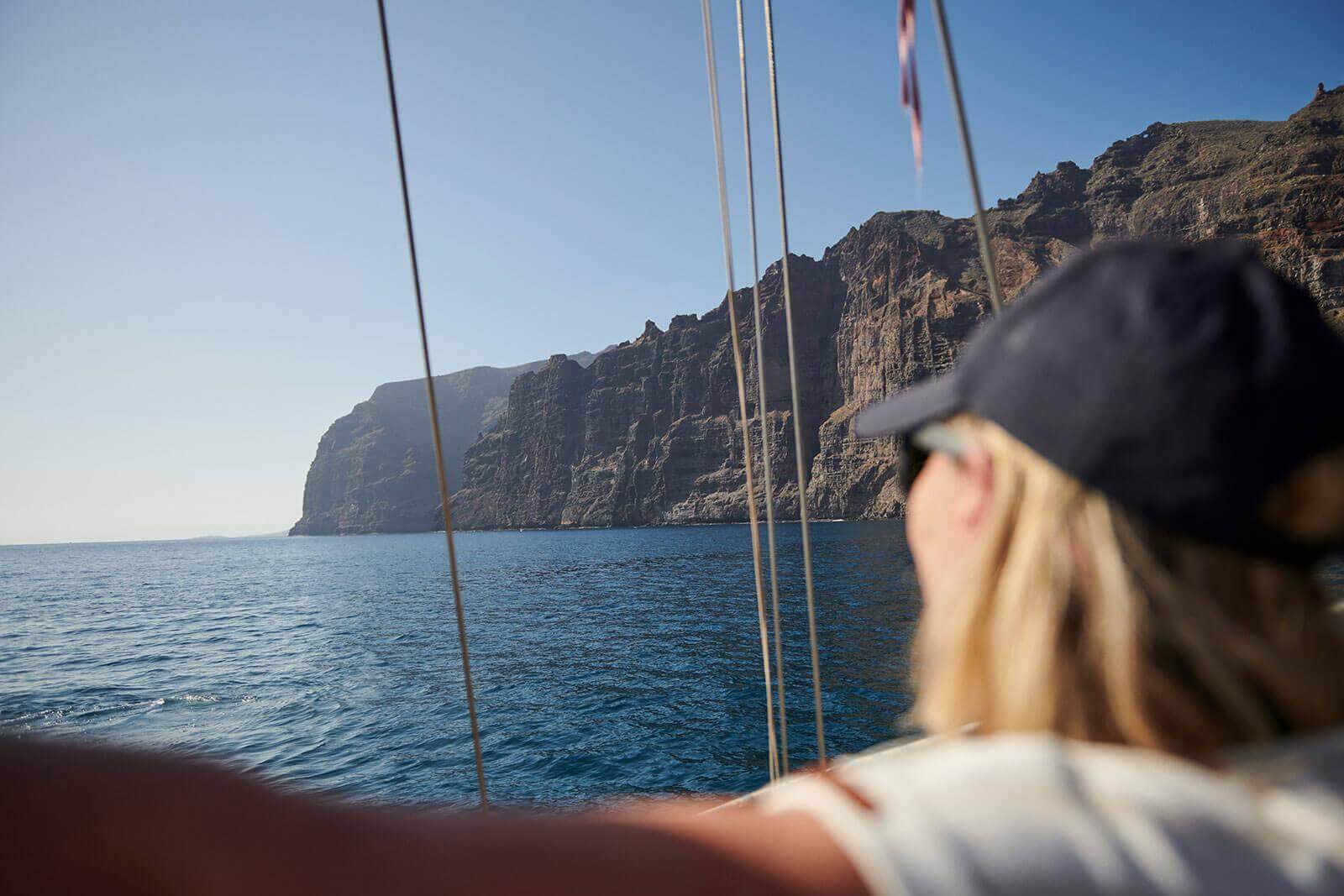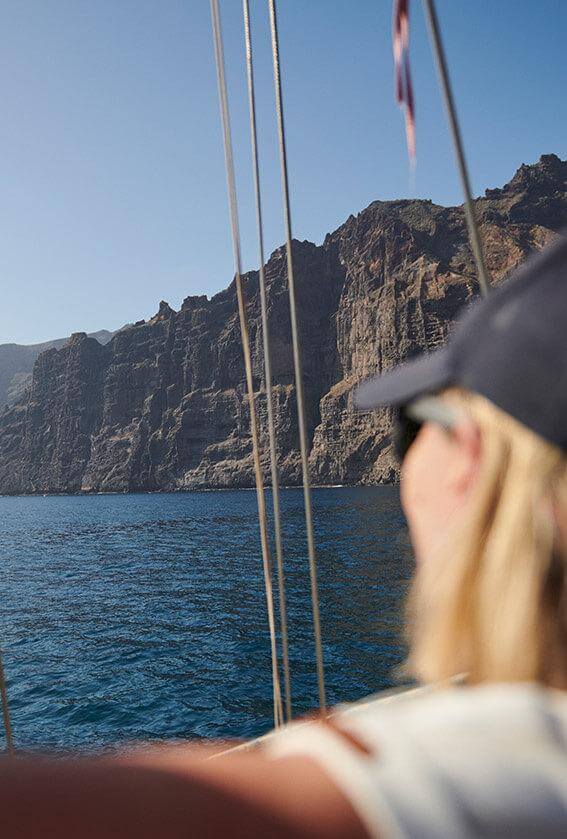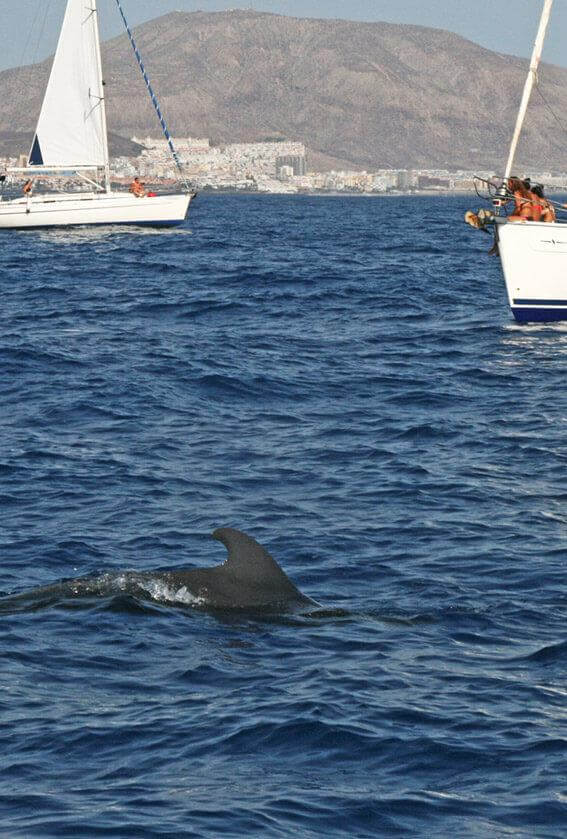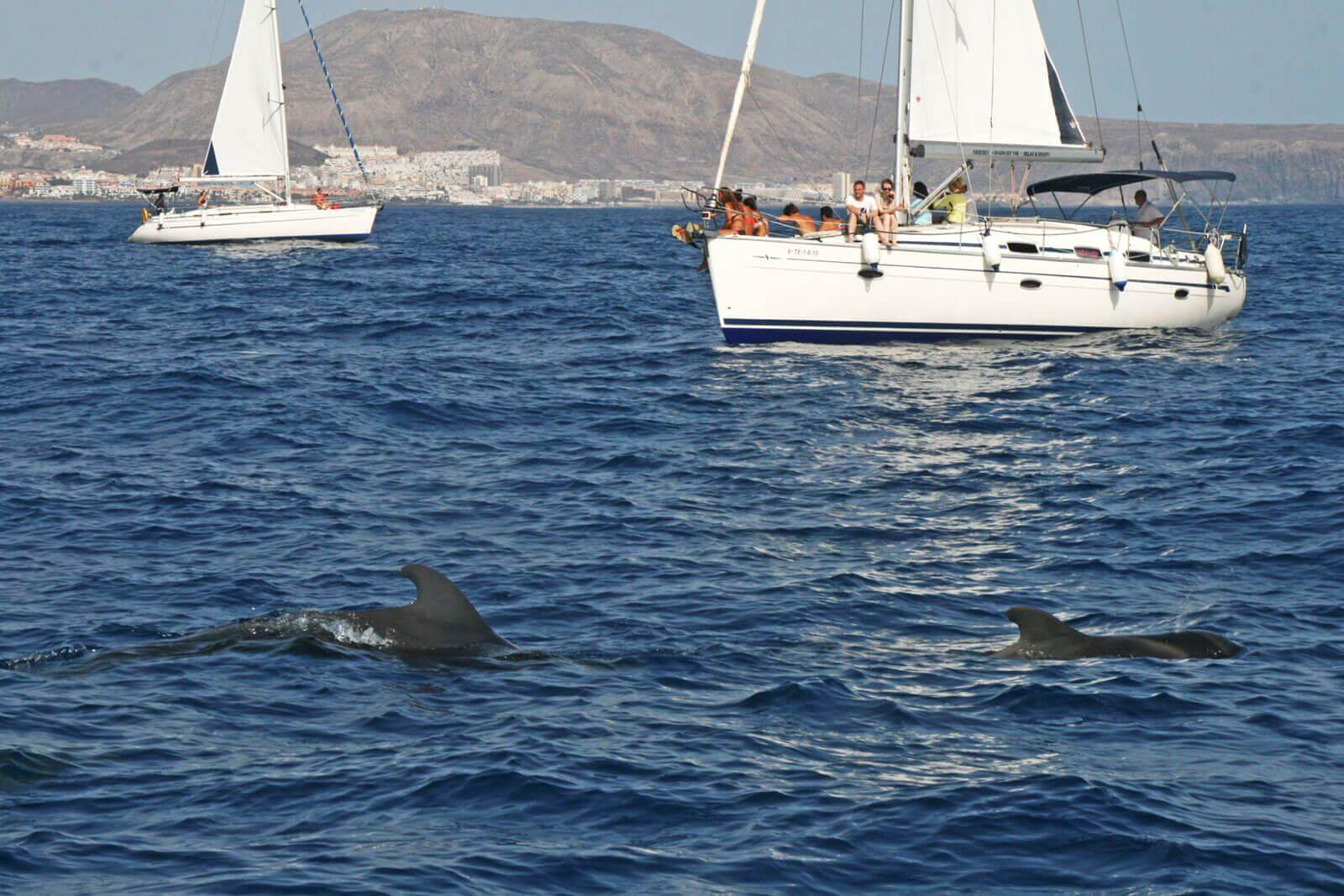Turtles, rays including manta and eagle rays, angelsharks, swordfish or large tunas, as well as a wide variety of fish and mammals such as dolphins, including the bottlenose dolphin, and whales. One of the particularities of the marine population of the Canary Islands is the cohabitation of numerous species within a single environment. The archipelago offers visitors an ocean full of life awaiting discovery.
An ecosystem determined by its geographical location
The Canary Islands have kilometres and kilometres of coastline where sailing enthusiasts can embark on numerous crossings. The coast also conceals an underwater treasure trove, a marine world which they can discover without having to dive down deep.
The influence of the ocean surrounding the Canary Islands and their geographical location have given rise to exuberant marine fauna and flora. The passage of the Gulf Stream, the great depths that exist between the islands and the absence of an underwater shelf have determined the natural selection of the species that inhabit the archipelago’s waters. And one can frequently find different environments within the ocean depths of the islands. From sheltered areas to others more exposed to the open sea, a rocky or sandy seabed, shallows and deeper water, local currents and very variable water temperatures.
This makes both the marine fauna and flora unique. In the Canary Islands, we can find species that are abundant in the cold waters of the North Atlantic, others more typical of temperate waters (tropical influence), or animals that live on the east coast of America, especially in the Caribbean or the Gulf of Mexico.
Marine diversity
The marine diversity of the Canary Islands translates into the number of species that can be found in their waters. The archipelago has at least 500 varieties of fish, 80 types of mammal and 5 marine reptiles, as well as a wide variety of brown and red algae, sponges, sea urchins, molluscs and cephalopods like the octopus, sea cucumbers, starfish, etc. The best-known species of fish are the Mediterranean parrotfish, the conger, the moray and the Atlantic wreckfish, all of which are frequently found in Canarian gastronomy.
The good illumination of the rocky seabed favours biological diversity, unlike on the sandy seabed, which is more impoverished because of the continual movement of the sand due to the waves. Far away from the coast, at greater depths, we find meadows of Cymodocea nodosa, a seagrass that provides a habitat for numerous small invertebrates and the young of different species of fish.
Whale Heritage Site for whale and dolphin watching
Another characteristic of the Canary Islands is the presence of numerous cetaceans concentrated in their waters. Up to 30 different species of these marine mammals can be seen close up and in their natural environment. The area between Tenerife and La Gomera is the one with the largest number of whales and dolphins in the archipelago. Although sightings are also frequent on the coasts of Gran Canaria, La Palma, Lanzarote, Fuerteventura and El Hierro.
The variety that can be spotted in a single day is such that one can see up to nine different species, something that occurs in very few places in the world. Sailors can observe anything from the short-finned pilot whale, the Rissos dolphin and the sperm whale to the common bottlenose dolphin, the Atlantic spotted dolphin, the Bryde’s whale and Cuvier’s beaked whales.
Control to safeguard the wellbeing of marine animals
Catching a glimpse of the fin of any of these striking animals is a huge attraction for sailors visiting the Canary Islands. But it also signifies a challenge and a great responsibility, because they must be aware of how to safeguard the wellbeing of these marine mammals, combined with the possibility of seeing them from close quarters.
In addition, these species are protected in order to conserve their ecosystem and prevent them from vanishing from the archipelago’s waters. Vessels which approach the sighting zones must comply with the established regulations and the recommendations made to them by the closest ports or marinas.



